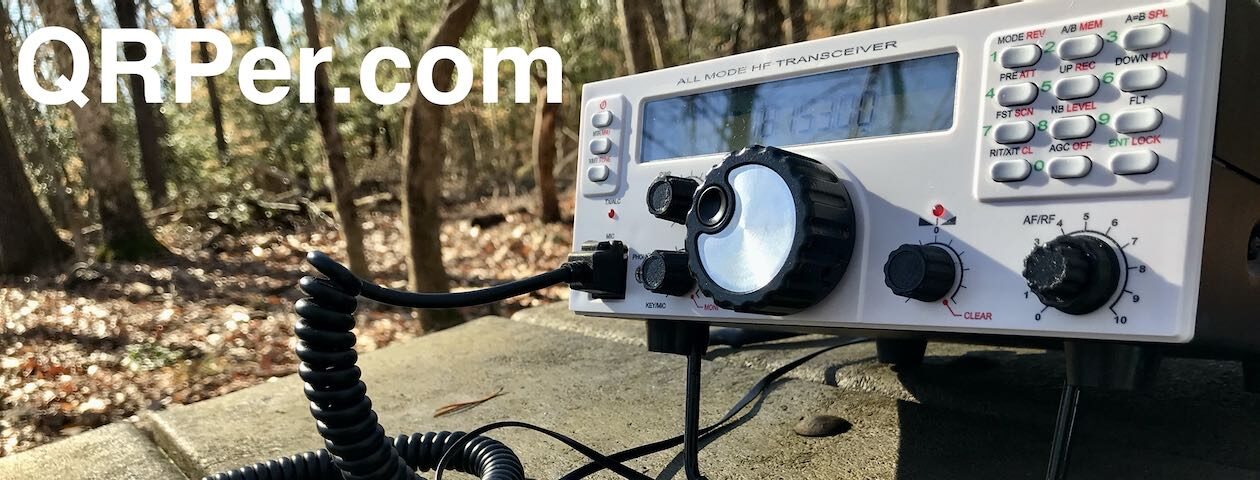Texas Tower of Power
by Scott (WE5J)
February 14, Valentine’s Day. I’m off work a bit early, so what else better to do than slip off for a POTA activation! I had high hopes of making it to the park, but had to wait on the delivery service to drop off a work package so I could complete my tasks for the day. As luck would have it, they delivered just before 1pm then I was off to my client’s office then headed to Sheldon Lake State Park, US-3056.

I’ve activated here a few times, most recently at the top of the John Jacob observation tower. The tower overlooks the park, Houston skyline, and the San Jacinto monument from a height of 82 feet above ground. Four days prior, on the top platform using a KH1 with the stock whip and counterpoise dropped between floorboards. The results were amazing! I expected the activation would be okay, but 12 contacts in 18min is one of my fastest activations!
The KH1 is a 5 watt output transceiver at best, with a compromised antenna. No, it wasn’t power or a fancy antenna. This caused the hamsters to start spinning the wheels; why was this so successful? Propagation? Elevated radial? Height over terrain? It’s time to test!
Fast forward 4 days, I’m back atop the Tower of Power! This activation was planned to start at the top platform to, (a) get at least 10 contacts for a valid activation then (b) move to ground level to continue. Nothing like a little a/b pseudo-scientific testing to spice up an activation!
Unfortunately, it was (a.5) and (b) testing; a group was setting up for a surprise marriage proposal on the top platform, to give them space and be respectful I moved down to the middle level. I estimate this is 40’ above surrounding terrain which is still significant in Houston. As per the last activation, set up on the west side, drop the counterpoise wire (~20’) through the floorboards, and start calling CQ on 20m.

 Two cycles of CQ and a Katy bar the door! 12 contacts in 13 minutes, the majority of RST’s 559 or 599. It was a madhouse! No major pileup, but the hunters just kept coming. I wanted to stay in the tower but was running short on time, during a lull I called QRT to move down to ground level.
Two cycles of CQ and a Katy bar the door! 12 contacts in 13 minutes, the majority of RST’s 559 or 599. It was a madhouse! No major pileup, but the hunters just kept coming. I wanted to stay in the tower but was running short on time, during a lull I called QRT to move down to ground level.
 Once on ground level about 400 yards from the tower, I respotted and started calling CQ. After about 5 minutes the first hunter was a nice surprise from Alabama, not a common state for me. No follow-on callers, so I called CQ again. And again. And again. After roughly 10 more minutes, a fine gentleman from Kansas called. I resumed a few more minutes of calling CQ before going QRT for the day.
Once on ground level about 400 yards from the tower, I respotted and started calling CQ. After about 5 minutes the first hunter was a nice surprise from Alabama, not a common state for me. No follow-on callers, so I called CQ again. And again. And again. After roughly 10 more minutes, a fine gentleman from Kansas called. I resumed a few more minutes of calling CQ before going QRT for the day.
 While on the ground level, I moved to different locations within the picnic area, tried elevating the radial, holding the radio straight up or a 45* angle, all with no noticeable change in RBN spots or hunter activity. It was painfully obvious that ground level in Houston is not the most conducive for QRP plus a small, compromised antenna.
While on the ground level, I moved to different locations within the picnic area, tried elevating the radial, holding the radio straight up or a 45* angle, all with no noticeable change in RBN spots or hunter activity. It was painfully obvious that ground level in Houston is not the most conducive for QRP plus a small, compromised antenna.
It was a great day to be out, great to play radio, and it was even more fun to scratch that scientific itch! I can say emphatically, without a doubt, height is might with QRP especially if you live in a low and flat elevation like Houston.
 Now that I think a bit, more questions come to mind! Was the tower acting as some sort of reflector? Will it make a difference if I move to the Eastern platform? Is there another all-wood platform I can try? Looks like we have more testing to do!
Now that I think a bit, more questions come to mind! Was the tower acting as some sort of reflector? Will it make a difference if I move to the Eastern platform? Is there another all-wood platform I can try? Looks like we have more testing to do!
Y’all be good! 72!
Scott (WE5J)
P.S. – If you drop a mechanical pencil from 30’ on to a hard surface, all your lead will shatter. Rendering the pencil useless. EDC Mini-Space Pen to the rescue!
























































































